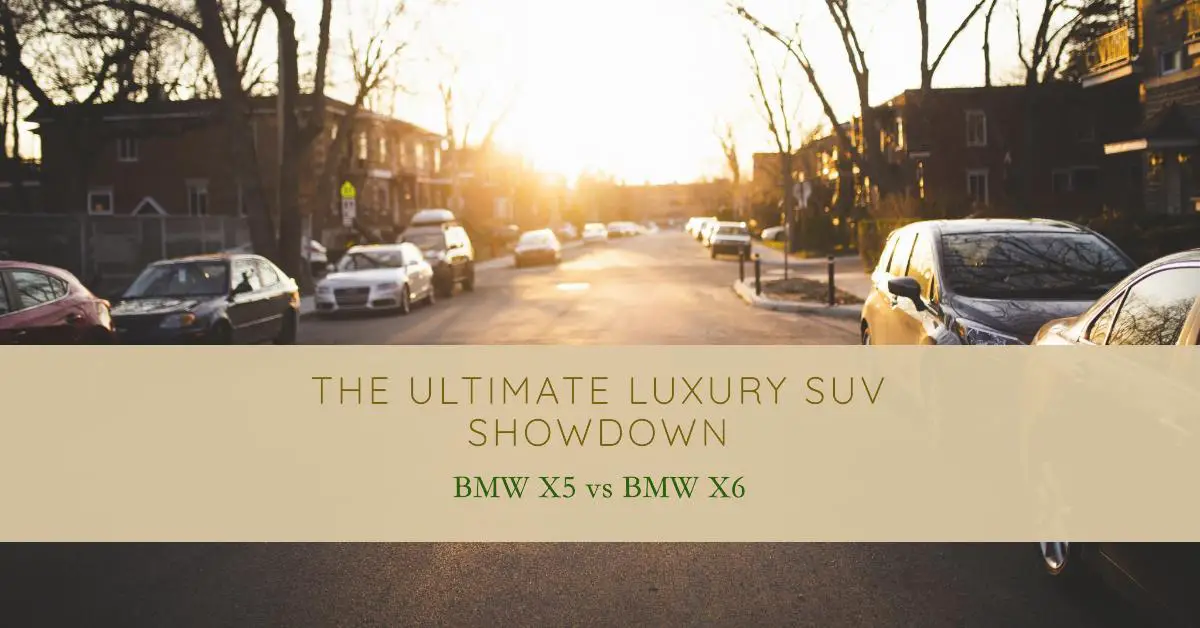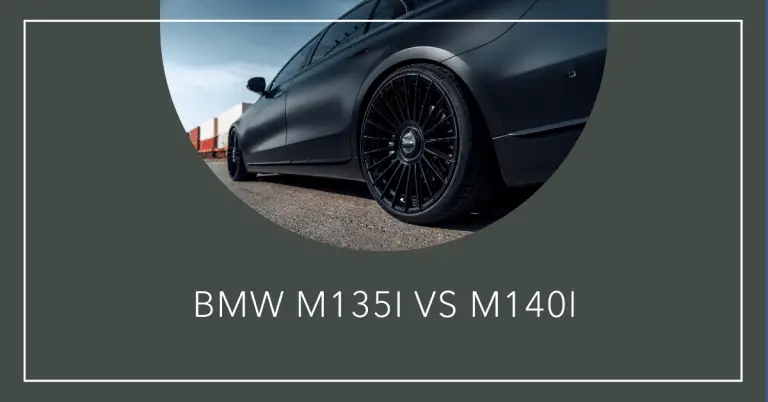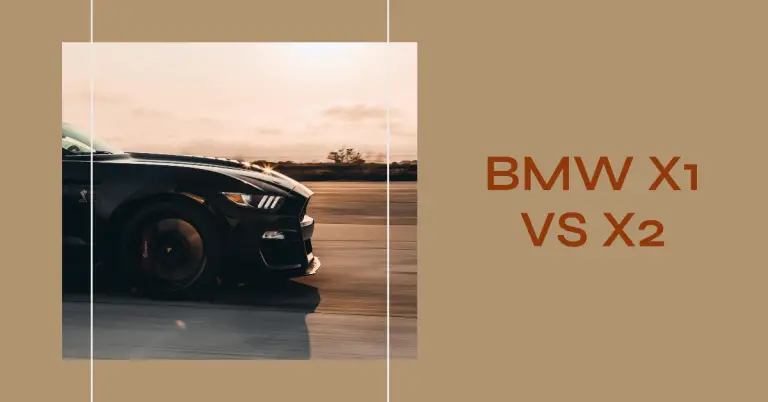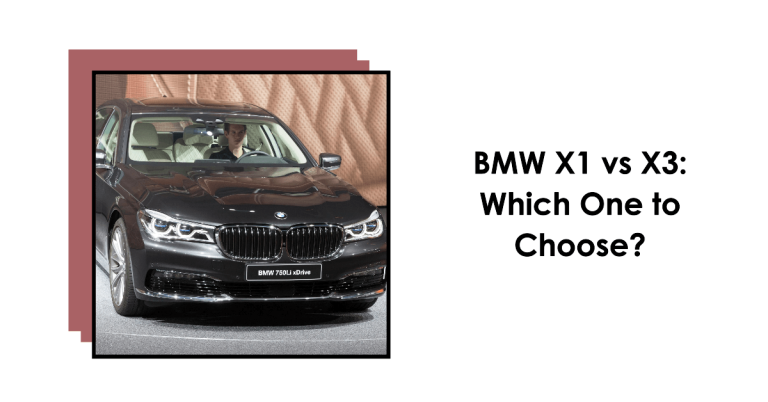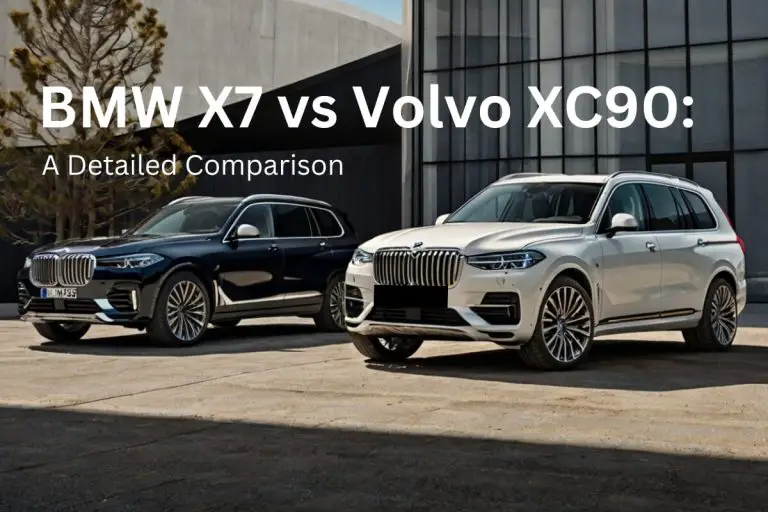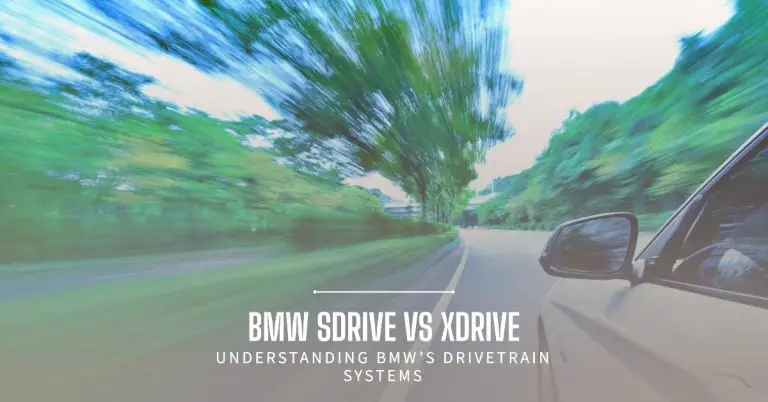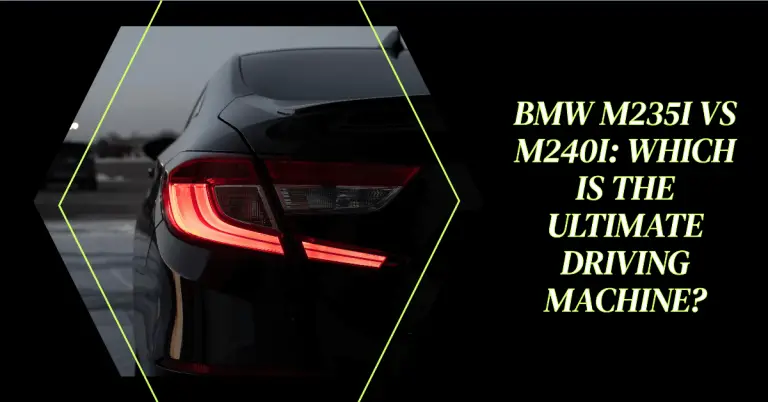BMW X5 vs BMW X6: The Ultimate Luxury SUV Showdown
When it comes to luxury SUVs, few automakers can match the prestige and performance of BMW’s offerings. The BMW X5 and X6 have long been among the brand’s flagship models, blending high-end luxury with impressive capability. However, these two vehicles have distinct personalities that cater to different preferences.
So, which one of these ultimate luxury SUVs should you choose – the BMW X5 or the BMW X6?
In short, the BMW X5 is the more practical and versatile choice, offering ample interior space and a traditional SUV design. The BMW X6, on the other hand, sacrifices some utility for a sleeker, coupe-like profile that prioritizes style and driving dynamics.
This comprehensive comparison will delve into the key differences between the BMW X5 and X6, exploring their design and styling, performance and driving experience, interior practicality, technology and features, and running costs. By the end, you’ll have a clear understanding of which model aligns better with your specific needs and priorities.
Design and Styling
When it comes to design and styling, the BMW X5 and X6 take distinctly different approaches, each catering to a unique set of preferences.
Exterior Design Differences
The BMW X5 embodies a more traditional SUV look, with a tall and upright stance that exudes confidence and capability. Its design is modern yet understated, with clean lines and subtle curves that give it a sophisticated and timeless appeal.
In contrast, the BMW X6 adopts a daring and unconventional “coupe-like” design that sets it apart from conventional SUVs. Its sleek silhouette features a steeply raked roofline that slopes towards the rear, creating a sporty and dynamic profile reminiscent of a sports coupe. The X6’s muscular fenders, sharp character lines, and aggressive front end further accentuate its bold and athletic aesthetic.
Interior Styling
While the exterior designs of the X5 and X6 diverge significantly, their interior cabins share more similarities. Both models feature luxurious and well-crafted interiors that showcase BMW’s attention to detail and commitment to premium materials.
The X5’s interior prioritizes spaciousness and practicality, with ample headroom and legroom for passengers in both rows. The X6, on the other hand, trades some interior space for its sleeker roofline, resulting in slightly reduced headroom, particularly in the rear seats.
Both SUVs offer a range of high-end materials, including fine leathers, wood trims, and metallic accents, creating an upscale and inviting ambiance. However, the X6’s interior leans more towards a sportier and driver-focused design, with bold styling cues and a more aggressive overall aesthetic.
Performance and Driving Experience
When it comes to performance and driving dynamics, the BMW X5 and X6 are both impressive vehicles, but they offer slightly different experiences.
Engine Options
Both the X5 and X6 are available with a variety of powerful gasoline and diesel engine options, catering to a wide range of performance preferences.
The X5 lineup includes a turbocharged 3.0-liter inline-six engine, a twin-turbocharged 4.4-liter V8, and a plug-in hybrid variant that combines a turbocharged 3.0-liter inline-six with an electric motor. Depending on the chosen engine, the X5 can deliver anywhere from 335 horsepower to an exhilarating 617 horsepower in the high-performance X5 M Competition model.
Similarly, the X6 offers a range of potent engines, including a turbocharged 3.0-liter inline-six, a twin-turbocharged 4.4-liter V8, and a high-output variant of the twin-turbo V8 that produces a staggering 617 horsepower in the X6 M Competition.
Ride and Handling
While both the X5 and X6 share a similar chassis and suspension components, their distinct body styles result in slightly different driving experiences.
The X5’s traditional SUV design and higher ride height contribute to a more comfortable and composed ride, particularly on rough terrain or uneven surfaces. Its well-tuned suspension effectively manages body roll and provides a planted and confident feel, even when taking corners at higher speeds.
On the other hand, the X6’s lower stance and sleeker profile lend it a more athletic and agile character on the road. Its weight distribution and aerodynamic design translate to sharper handling and a more engaging driving experience, particularly when pushing the limits on winding roads or during spirited driving.
However, it’s important to note that the differences in ride and handling between the X5 and X6 are relatively subtle, and both vehicles offer a highly competent and enjoyable driving experience befitting their luxury status.
Off-Road Capabilities
While neither the X5 nor the X6 are designed as dedicated off-road vehicles, the X5’s traditional SUV design gives it a slight advantage when it comes to venturing off the beaten path.
With its higher ground clearance and more conventional SUV proportions, the X5 is better equipped to handle moderate off-road conditions, such as gravel roads or light trails. Its available all-wheel-drive system and various terrain modes further enhance its capability in challenging conditions.
The X6’s lower ride height and more road-focused design make it slightly less suitable for serious off-road adventures. While it can handle light off-road conditions, its sleek profile and lower ground clearance may limit its ability to navigate more extreme terrain or obstacles.
Practicality and Interior Space
One of the most significant differences between the BMW X5 and X6 lies in their practicality and interior space, directly influenced by their respective design philosophies.
Passenger Room
The BMW X5’s traditional SUV design translates into a more spacious and accommodating interior for passengers. With ample headroom and legroom in both the front and rear seats, the X5 can comfortably seat up to five adults without compromise.
In contrast, the X6’s sloping roofline, while contributing to its sleek profile, inevitably impacts rear passenger headroom. While the front seats offer excellent space and comfort, taller passengers in the rear may find themselves feeling slightly more confined, particularly in terms of headroom.
Cargo Capacity
The X5’s boxy and upright design also gives it a significant advantage when it comes to cargo capacity and versatility. With a generous 33.9 cubic feet of cargo space behind the second row, and up to 72.3 cubic feet with the rear seats folded down, the X5 can easily accommodate luggage, sports equipment, or even larger items with ease.
The X6, on the other hand, sacrifices some cargo capacity in favor of its sleek and sporty silhouette. With 27.4 cubic feet of cargo space behind the second row, and a maximum of 59.6 cubic feet with the rear seats folded, the X6 offers less overall cargo room than its more practical X5 counterpart.
Family-Friendly Features
If you’re considering either of these luxury SUVs as a family vehicle, the BMW X5 may be the more suitable choice due to its greater practicality and family-friendly features.
In addition to its ample interior space, the X5 offers versatile seating configurations, including an optional third row that expands seating capacity to seven passengers. It also provides a range of convenient features, such as multiple USB ports, rear climate controls, and available entertainment systems to keep passengers comfortable and entertained on longer journeys.
While the X6 can certainly accommodate families, its reduced rear passenger space and cargo capacity may make it less ideal for those with larger families or frequent hauling needs.
Technology and Features
Both the BMW X5 and X6 are loaded with advanced technology and premium features, reflecting their status as flagship luxury SUVs.
Infotainment and Connectivity
At the heart of both vehicles’ infotainment systems is BMW’s iDrive interface, which has been refined and improved over the years to provide a highly intuitive and user-friendly experience. Both models feature large, high-resolution displays that seamlessly integrate with the digital instrument cluster, creating a cohesive and modern cockpit environment.
In addition to standard features like Apple CarPlay and Android Auto compatibility, both the X5 and X6 offer a range of advanced connectivity options, including built-in navigation, real-time traffic information, and wireless charging for compatible devices.
Comfort and Convenience
When it comes to comfort and convenience, the X5 and X6 spare no expense. Both models offer a wealth of premium amenities, such as heated and ventilated front seats, multi-zone climate control, and premium sound systems from audiophile brands like Bowers & Wilkins or Harman Kardon.
Additionally, both SUVs are available with a range of advanced driver assistance features, including adaptive cruise control, lane-keeping assist, and semi-autonomous driving modes that can take over certain driving tasks in specific situations, such as highway driving or traffic jams.
While the X5 and X6 share many of these comfort and convenience features, the X6’s sportier nature may translate to a slightly more driver-focused cabin environment, with features like more heavily bolstered seats and a more aggressive steering wheel design.
Trim Levels and Customization
One area where the BMW X5 and X6 truly shine is in the variety of trim levels and customization options available. Both models offer a wide range of configurations, from well-equipped entry-level trims to ultra-high-performance variants that cater to the most discerning driving enthusiasts.
The X5 lineup starts with the sDrive40i and xDrive40i models, offering a powerful turbocharged inline-six engine and a host of luxury features. From there, buyers can step up to the potent M50i trim, which adds a twin-turbocharged V8 engine and sportier styling cues.
For those seeking the ultimate in performance, the X5 M Competition model delivers a heart-pounding 617 horsepower from its twin-turbocharged V8, along with a host of high-performance upgrades, including an enhanced suspension, brakes, and aerodynamic enhancements.
The X6 follows a similar trim hierarchy, starting with the xDrive40i and offering progressively more powerful and aggressive variants, culminating in the X6 M Competition with its blistering performance and head-turning styling.
Across both model lines, BMW offers an extensive range of customization options, from exterior paint colors and wheel designs to interior upholstery choices and high-end audio systems, allowing buyers to tailor their X5 or X6 to their exact preferences.
Running Costs and Value
While luxury and performance come at a premium, it’s essential to consider the running costs and long-term value when choosing between the BMW X5 and X6.
Fuel Economy Ratings
As one might expect from large, powerful SUVs, neither the X5 nor the X6 is particularly thrifty when it comes to fuel consumption. However, there are some differences in their efficiency ratings that are worth noting.
The X5’s base turbocharged inline-six engine achieves an EPA-estimated 23 mpg in the city and 27 mpg on the highway, while the twin-turbocharged V8 models see a slight dip in fuel economy. The plug-in hybrid variant, however, offers significantly improved efficiency, with an EPA-estimated electric-only range of up to 30 miles.
In comparison, the X6 models tend to be slightly less fuel-efficient due to their more aerodynamic design and lower ride height. The base xDrive40i variant is rated at 23 mpg in the city and 26 mpg on the highway, while the high-performance variants see a further reduction in fuel economy.
It’s worth noting that real-world fuel consumption can vary significantly based on driving habits and conditions, and opting for higher-performance models in either lineup will inevitably result in increased fuel costs.
Pricing and Resale Value
When it comes to pricing, the BMW X5 and X6 are both positioned firmly in the luxury segment, with starting prices that reflect their premium status.
The X5 lineup begins with the sDrive40i model, which carries a starting MSRP of around $65,000. From there, prices can climb well into the six-figure range for higher trims and performance variants, with the top-of-the-line X5 M Competition commanding a starting price of around $120,000.
The X6 follows a similar pricing structure, with the base xDrive40i model starting at around $74,000. Like the X5, the X6’s pricing can escalate quickly as you move up the trim levels, with the range-topping X6 M Competition carrying a starting price north of $130,000.
In terms of resale value, both the X5 and X6 are expected to hold their value reasonably well, thanks to BMW’s strong brand equity and the desirability of these luxury SUVs. However, it’s worth noting that higher-performance variants and heavily optioned models may experience more significant depreciation over time, particularly as newer models are introduced.
Maintenance and Repair Costs
As with any luxury vehicle, maintaining and repairing a BMW X5 or X6 can be more expensive than their mainstream counterparts. Both models require premium fuel and specialized maintenance, which can drive up ownership costs over time.
BMW does offer various maintenance and warranty packages that can help mitigate some of these costs, but it’s still important to factor in the potential for higher maintenance and repair bills, particularly as the vehicles age.
Additionally, it’s worth considering that the more complex and high-performance variants of both the X5 and X6 may incur higher maintenance and repair costs due to their advanced components and systems.
The Verdict
After an in-depth examination of the BMW X5 and X6, it’s clear that both models offer exceptional luxury, performance, and technology, but cater to slightly different preferences and priorities.
Summary of Key Differences
The BMW X5 excels in practicality and versatility, offering ample interior space, cargo capacity, and a traditional SUV design that makes it well-suited for family duties or adventurous outdoor pursuits. Its slightly more efficient powertrains and lower starting prices also make it a more cost-effective choice for many buyers.
On the other hand, the BMW X6 prioritizes style and driving dynamics over outright practicality. Its sleek, coupe-like silhouette and lower ride height contribute to a more engaging and athletic driving experience, albeit at the expense of some interior space and cargo capacity.
Which One is Right for You?
If your primary focus is on interior space, cargo capacity, and overall practicality, the BMW X5 is likely the better choice. Its traditional SUV design and versatile interior make it an excellent option for families or those with active lifestyles that require hauling gear or equipment.
However, if you value a more dynamic driving experience and prioritize style over sheer utility, the BMW X6 may be the more appealing option. Its bold and distinctive design, coupled with its agile handling and high-performance potential, make it a compelling choice for driving enthusiasts who still require the versatility of an SUV.
Ultimately, both the X5 and X6 represent exceptional examples of luxury SUVs, and the choice between them will come down to your individual preferences and priorities. Whether you value practicality or prioritize style and performance, either model is sure to deliver an exceptional ownership experience befitting of the BMW brand.

